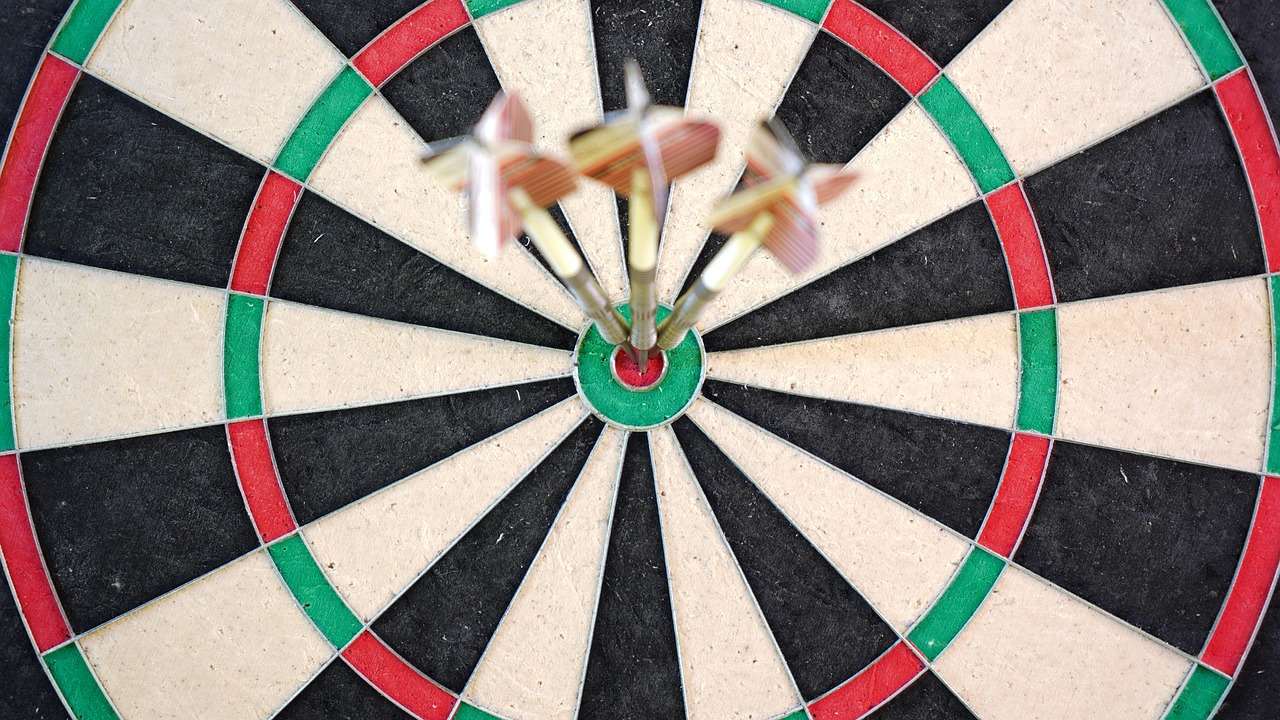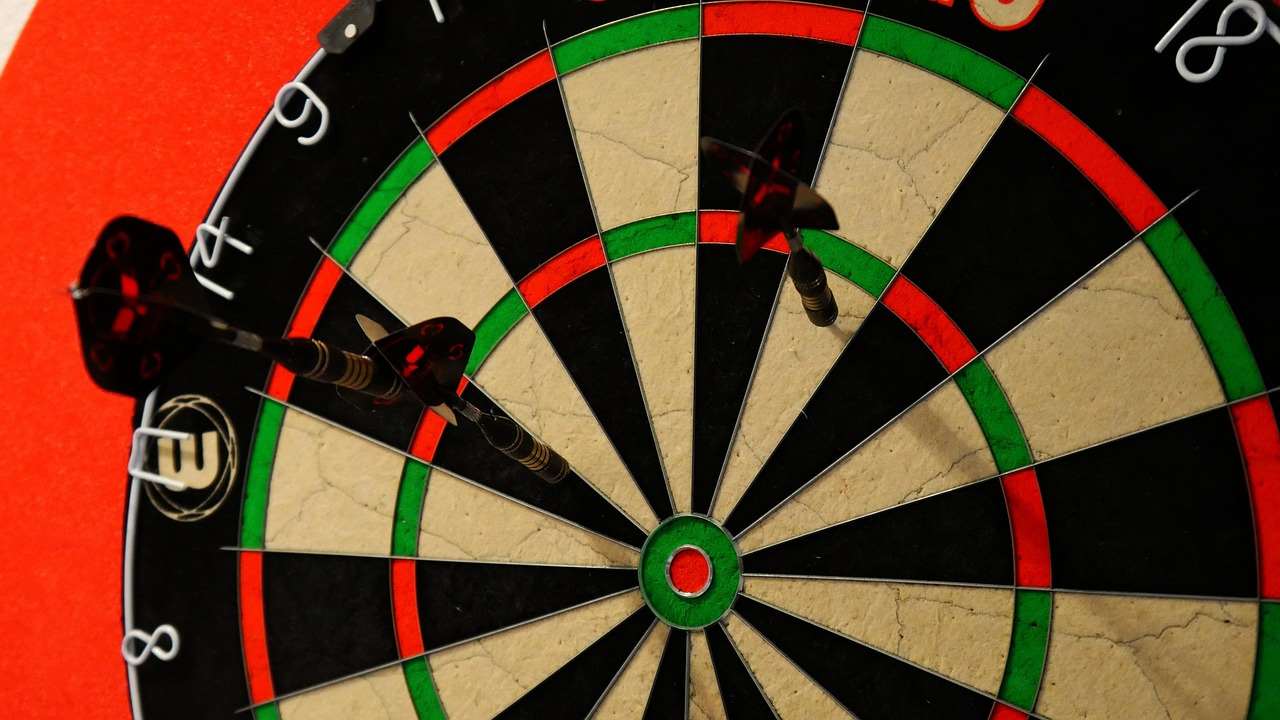Understanding bullseye bounce out rules is crucial for fair play in darts. Generally, a dart that bounces out of the board doesn’t score, but specific situations, like a clear defect with the board, can warrant a re-throw; this article will comprehensively cover all aspects of this rule, including common scenarios, tournament regulations, and how to handle disputes.
⚠️ Still Using Pen & Paper (or a Chalkboard)?! ⚠️
Step into the future! The Dart Counter App handles all the scoring, suggests checkouts, and tracks your stats automatically. It's easier than you think!
Try the Smart Dart Counter App FREE!Ready for an upgrade? Click above!
Decoding Bullseye Bounce Out Rules
Let’s delve into the specifics of bullseye bounce out rules. These rules are not always explicitly written in standard dart rulebooks, but they are part of the common understanding of fair play. A dart bouncing out is generally considered a non-scoring dart. However, the reasoning behind the bounce out plays a significant role in determining whether a re-throw is allowed.
There are several reasons why a dart might bounce out. These include:
- Board Quality: A poor-quality dartboard with hard sisal and worn-out wires is more prone to bounce outs.
- Dart Quality: Darts with dull points or loose flights might not stick properly.
- Throwing Technique: Incorrect throwing technique, such as throwing with too much force or an incorrect angle, can cause bounce outs.
- Obstruction: Rarely, a dart already in the board might cause a newly thrown dart to bounce.

The standard ruling in most recreational games is that if a dart bounces out for any of the reasons listed above, it doesn’t count. However, if there’s a provable defect with the board or if an external factor caused the bounce out (like someone bumping the board), a re-throw might be granted at the discretion of the players or, in a tournament, the referee.
Common Bounce Out Scenarios and Their Rulings
Here are some common scenarios where darts bounce out and how they are typically handled:
- The “Classic” Bounce Out: The dart hits the board, sticks momentarily, then falls out. This almost always counts as a non-scoring dart.
- The Wire Bounce: The dart hits the wire and bounces directly out. This is also considered a non-scoring dart.
- The “Robin Hood”: One dart strikes another already in the board, causing it to fall out. The thrown dart does not count; the original dart remains in the board.
- The Board Defect Bounce: The dart bounces out due to a visible defect in the board. This is where the re-throw comes into play. The player should immediately call attention to the defect and request a re-throw.
- The External Interference Bounce: If someone accidentally bumps the board, causing a dart to bounce out, a re-throw is usually granted.
Understanding the reasoning behind these scenarios can help you navigate potential disputes. Knowing Basic Darts Fundamentals for Beginners can also reduce the frequency of bounce outs due to poor technique.
What Constitutes a “Board Defect”?
Determining what qualifies as a “board defect” can be subjective, but here are some guidelines:
- Loose Wires: Wires that are visibly loose or move easily when touched.
- Missing Sisal: Obvious gaps or holes in the sisal fibers.
- Excessive Hardness: A section of the board that is significantly harder than the surrounding areas.
- Uneven Surface: A board that isn’t flat, causing darts to deflect unpredictably.
If you suspect a board defect, it’s important to address it before the game begins to avoid disputes later on.

Official Tournament Bullseye Bounce Out Rules and Regulations
In official tournaments, bullseye bounce out rules are generally stricter. While the fundamental principle remains that a bounce out doesn’t score, the circumstances for a re-throw are more clearly defined and less subject to player interpretation.
Typically, a referee or tournament official has the final say on whether a re-throw is warranted. The burden of proof lies with the player claiming a board defect or external interference. Video evidence may also be reviewed if available. If your planning on Adapting darts rules for beginners in a tournament, make sure you follow the regulations of the tournament.
Some key points to remember regarding tournament bounce out rules:
- Immediate Reporting: Any potential issue should be reported to the referee immediately after the bounce out occurs.
- Referee Discretion: The referee’s decision is final. Arguing with the referee can result in penalties.
- Limited Re-throws: Even if a defect is confirmed, the number of re-throws allowed may be limited.
- Equipment Standards: Tournaments usually have strict equipment standards, including dartboard quality. Boards are often inspected before the tournament begins to minimize potential issues.
Familiarizing yourself with the specific rules of the tournament you’re participating in is crucial. Don’t assume that standard recreational rules apply.
Resolving Disputes Related to Bullseye Bounce Out Rules
Disputes regarding bullseye bounce out rules can arise even among friends. Here are some tips for resolving them fairly and amicably:
- Stay Calm: Arguing and raising your voice won’t solve anything. Maintain a calm and respectful demeanor.
- Review the Situation: Objectively analyze why the dart bounced out. Was it a board defect, dart quality, or simply a bad throw?
- Consult the Rules: Refer to any pre-agreed upon rules or guidelines. If none exist, discuss and agree on a fair resolution.
- Compromise: Be willing to compromise. Perhaps allow a re-throw if there’s reasonable doubt, even if you’re not entirely convinced.
- Seek a Third Opinion: If you can’t reach an agreement, ask a neutral third party to mediate.
- Consider it a Learning Opportunity: Use the dispute as an opportunity to improve your understanding of the rules and develop better communication skills.
Remember that darts is, ultimately, a game. It’s more important to maintain good relationships than to win every argument.
Proactive Steps to Minimize Bounce Outs
Preventing bounce outs altogether is the best way to avoid disputes. Here are some proactive steps you can take:
- Invest in a High-Quality Dartboard: A good-quality sisal dartboard is less prone to bounce outs.
- Use Well-Maintained Darts: Keep your dart points sharp and your flights in good condition.
- Regular Board Maintenance: Rotate your dartboard regularly to prevent excessive wear in one area.
- Proper Lighting: Ensure adequate lighting to clearly see the board and your targets.
- Stable Mounting: Mount the dartboard securely to prevent wobbling or movement.
By taking these steps, you can significantly reduce the frequency of bounce outs and minimize the potential for disagreements.
The Psychological Impact of Bounce Outs
It’s easy to overlook the psychological impact of a dart bouncing out. A bounce out can be frustrating and demoralizing, especially if it occurs at a crucial moment in the game. Learning to manage this frustration is an important part of improving your game.
Here are some tips for dealing with the psychological impact of bounce outs:
- Acknowledge Your Frustration: Don’t bottle up your emotions. Acknowledge that you’re feeling frustrated.
- Take a Deep Breath: Taking a few deep breaths can help you calm down and regain focus.
- Refocus on the Next Throw: Don’t dwell on the bounce out. Focus on making your next throw as good as possible.
- Positive Self-Talk: Remind yourself of your skills and abilities. Replace negative thoughts with positive affirmations.
- Learn from the Experience: Analyze why the dart bounced out and identify any areas for improvement.
Developing mental resilience is just as important as developing your throwing technique. Fun dart game variations with modified rules can also help take the pressure off and make the game more enjoyable.

Advanced Strategies: Using Bounce Outs to Your Advantage
While bounce outs are generally undesirable, experienced players can sometimes use them to their advantage. This involves strategically aiming for the wire or other areas of the board to influence the trajectory of subsequent darts.
For example, if you need a specific number but another dart is blocking your path, you might intentionally aim for the wire to deflect the first dart and create an opening. This requires a high degree of skill and precision, and it’s not a strategy for beginners.
Furthermore, understanding the physics of dart trajectory and bounce is important for advanced play. This includes factors like dart weight, flight shape, and throwing velocity. By mastering these concepts, you can make more informed decisions about where to aim and how to control the outcome of your throws.
Future of Bullseye Bounce Out Rules: Technology and Innovation
As technology continues to advance, we may see innovations that reduce the frequency and ambiguity of bounce outs. For example, electronic dartboards with sensors that accurately detect dart impacts could eliminate the need for human judgment.
Furthermore, advancements in dartboard materials and design could lead to boards that are less prone to bounce outs. Self-healing sisal fibers and improved wire designs are just a few possibilities.

Ultimately, the goal is to create a more fair and consistent playing experience for all dart players. By embracing technology and innovation, we can minimize the impact of bullseye bounce out rules and focus on the skill and strategy of the game.
Remember, whether you’re a casual player or a seasoned pro, understanding and respecting the rules of darts is essential for enjoying the game and maintaining good sportsmanship. Adapting creative dart rules for parties and social gatherings can also make the game more inclusive and fun for everyone.
Conclusion
In summary, understanding **bullseye bounce out rules** is vital for fair play in darts, encompassing common scenarios, tournament regulations, and dispute resolution. While generally a non-scoring event, specific circumstances like board defects may warrant re-throws. Proactive measures like quality equipment and board maintenance minimize bounce outs, while mastering the mental game helps manage frustration. As technology advances, innovations may further reduce bounce out ambiguity. Remember, respecting the rules enhances the overall darting experience.
Now that you’re equipped with this knowledge, grab your darts and head to the oche with confidence! Practice good sportsmanship and settle disputes fairly. And remember, even the best players experience bounce outs – it’s all part of the game! Go practice and perhaps consider entering a local tournament or organize a dart night with friends. The world of darts awaits!
Hi, I’m Dieter, and I created Dartcounter (Dartcounterapp.com). My motivation wasn’t being a darts expert – quite the opposite! When I first started playing, I loved the game but found keeping accurate scores and tracking stats difficult and distracting.
I figured I couldn’t be the only one struggling with this. So, I decided to build a solution: an easy-to-use application that everyone, no matter their experience level, could use to manage scoring effortlessly.
My goal for Dartcounter was simple: let the app handle the numbers – the scoring, the averages, the stats, even checkout suggestions – so players could focus purely on their throw and enjoying the game. It began as a way to solve my own beginner’s problem, and I’m thrilled it has grown into a helpful tool for the wider darts community.